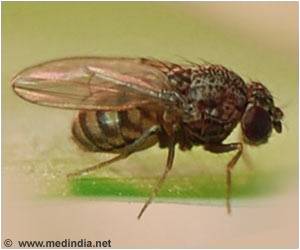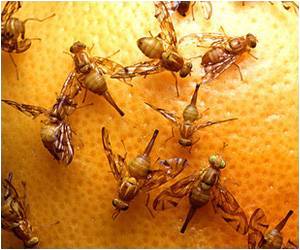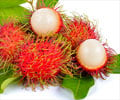Insects represent remarkable diversity and have adapted to all sorts of ecological nooks and crannies to sustain in this nature.

Now, using the common fruit fly, researchers at the University of California, Riverside have performed a study that describes just how the fly's taste receptors detect sweet compounds.
"Sweet taste serves as an indicator of nutritive value, and the fly, like many other animals, has quite a sweet tooth," said Anupama Dahanukar, an assistant professor of entomology who led the research project.
The fly is a powerful model organism for studying animal development and behavior. Understanding the mechanisms by which it tastes and ingests sweet substances may offer tools to control insect feeding. The proteins that detect sweet compounds in insects belong, however, to a novel family of receptors that are quite different from the ones found in mammals. Even though these insect receptors were discovered more than a decade ago, how they recognize diverse chemicals remained an enigma and an unmet challenge — until now.
The study, which appears online this week in the Proceedings of the National Academy of Sciences, holds promise for uncovering functions of taste receptors in insects that transmit diseases (for example, mosquitoes) or damage crops (for example, beetles and weevils).
The fruit fly has eight sweet taste receptors, and what each one does specifically hasn't been clear. To their surprise, the researchers found that each of the eight receptors confers sensitivity to one or more of the sweet substances they tested in the lab. Their systematic analysis showed that the receptors could be separated into two groups based on which compounds they detect and how closely related they are in sequence.
Advertisement
Her research team used a Drosophila olfactory neuron as a host for expressing taste receptors. This particular neuron is unique because, although it is linked to smell, it expresses members of the taste receptor family.
Advertisement
"One would expect that swapping taste receptors between different taste neurons would be sound strategies, but those have been tried and failed," said Erica Gene Freeman, a bioengineering graduate student working in Dahanukar's lab and the first author of the research paper.
Moving next to mosquitoes, the researchers were able to express a taste receptor from the malaria vector mosquito, Anopheles gambiae, in the fly olfactory neuron.
Despite the evolutionary divergence between mosquitoes and flies, the mosquito taste receptor was functional in the fly neuron in the absence of any other mosquito factors.
"This gives us the impetus for investigating other taste receptors from insects such as mosquitoes that transmit diseases, as well as pests that feed on crops," Dahanukar said. "One important goal is to see if we can use this system to find compounds that can modify feeding behaviors of harmful insects in a targeted manner."
Although the researchers' method is laborious, it is the only technique with which many different taste receptors have been successfully expressed. It offers a platform to probe the specificity of individual taste receptors, potentially from a variety of insects.
Source-Eurekalert














